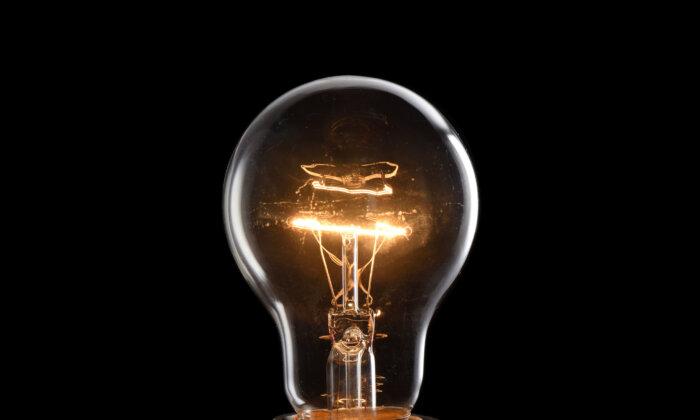The light bulb, the iconic symbol of the “bright idea,” contributed a great deal more than its association with creativity.
Over the centuries, the invention has undoubtedly saved countless lives. Candles and oil lamps frequently burned down residences, and gas lamps were prone to explode. The invention made it safer to travel after dusk, as night was a dangerous time to be away from home, a time when robbers and other lowlifes prowled.
And the light bulb ushered in countless changes to our lives: It allowed for longer working hours and a more robust nightlife, and it galvanized a wave of new, energy-dependent inventions and appliances.
For these reasons, the light bulb is arguably the most important invention of modern times—or rather, the most important series of inventions. Its painstaking development was not a single step but a process, which led Thomas Edison to formulate his famous quote: “I have not failed 10,000 times—I’ve successfully found 10,000 ways that will not work.”

Failed Attempts
Edison’s early prototypes drew on pre-existing technologies. His first lamp design used telegraph-style relays.For his incandescent element, he experimented with metal sticks, buttons, and foil. When he eventually hit on a spiraled wire, he used platinum as the filament. Other early components included induction coils, storage batteries, and a “pneumatic regulator” that expanded and contracted air.
His original idea for a commercial grid involved distributing electricity through underground pipes (as with gas lighting), powered by a dynamo using a magnetized tuning fork—also an idea taken from his telegraph research.
Patented Components

Carbon filament. After discovering the proper filament material, he told a reporter, “I think the Almighty made carbon especially for the electric light.”
Vacuum pump. This part helps to increase the melting point of the filament wire. It also protects it from the effects of oxidation.
Edison screw. The bulb’s familiar threaded metal cap with matching socket. Though modern light bulb fittings vary in size, their names still begin with the letter E, in homage to their inventor.
Distribution system. Wires hanging on poles, powered by a generator that uses a long magnet for the battery. Edison’s low-voltage direct current was safer than competing alternating current systems.
This article was originally published in American Essence magazine.










